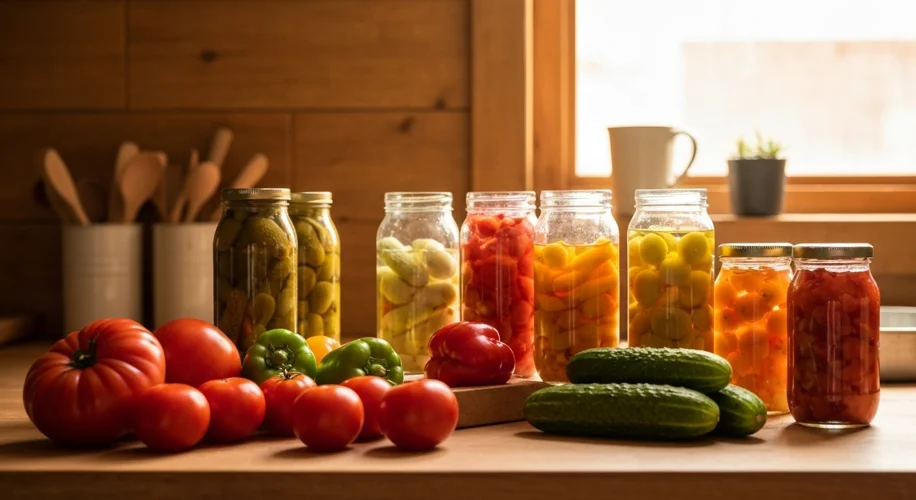The garden is bursting with life right now – tomatoes are blushing, cucumbers are crisp, and peppers are showing off their colors. It’s a beautiful sight, but as we all know, summer’s bounty doesn’t last forever. That’s why I’m so excited to talk about my favorite way to extend that garden-fresh flavor: preserving your harvest through canning and pickling.
This is a skill that connects us to generations past and offers a delicious reward for our gardening efforts. For me, it’s about capturing that perfect moment of ripeness and having it ready to enjoy months down the line. It’s truly from my garden to my table, all year long.
Why Preserve?
Beyond the obvious benefit of enjoying your hard work through the colder months, preserving your harvest means you’re eating at the peak of flavor and nutritional value. It also reduces food waste and can be a more economical way to enjoy produce compared to buying it out of season.
Getting Started with Canning
Canning is essentially sealing food in jars and heating them to a temperature that destroys spoilage organisms and inactivates enzymes. The most common methods for home canning are:
- Water Bath Canning: This is ideal for high-acid foods like fruits, jams, jellies, pickles, and most tomatoes. You fill sterilized jars, secure the lids, and then submerge them in boiling water for a specific amount of time. The boiling water creates the vacuum seal as the jars cool.
- Pressure Canning: This method is crucial for low-acid foods like vegetables, meats, and poultry. Because these foods can harbor Clostridium botulinum spores (which can cause botulism), they need to reach a higher internal temperature than boiling water can provide. A pressure canner achieves this by building up steam pressure.
Quick Pickling: A Fast Track to Flavor
Pickling is a form of preservation that uses brine (typically salt and water) or vinegar, along with spices, to preserve food. While pickling can be a form of canning (like dill pickles), quick pickling offers a faster way to get that tangy flavor.
Quick pickles, also called refrigerator pickles, are usually made with a vinegar brine and stored in the refrigerator. They don’t undergo the high-heat processing of canning, so they don’t have the same shelf life, but they’re incredibly simple to make and offer a fantastic crunch. Think of quick-pickled cucumbers, onions, or even radishes to top salads or sandwiches.
My Top Tips for Beginners
- Start Simple: Begin with high-acid recipes like fruit jams or quick pickles. These are generally more forgiving.
- Sterilize Everything: Jars, lids, rings, and utensils that touch the food need to be clean and sterilized to prevent spoilage and ensure safety.
- Follow Tested Recipes: Especially when you’re starting, use recipes from reliable sources like the National Center for Home Food Preservation or reputable canning books. They’ve done the science to ensure safety and quality.
- Inspect Jars: After processing, check that the lids have sealed properly. The center of the lid should be concave and not flex when pressed.
- Label and Store: Label your jars with the contents and the date. Store them in a cool, dark place.
Preserving the harvest is a rewarding experience that deepens our connection to our food. It’s a way to savor the sunshine and sweetness of summer long after the last frost. So, grab those extra tomatoes, cucumbers, and berries – it’s time to fill some jars!

